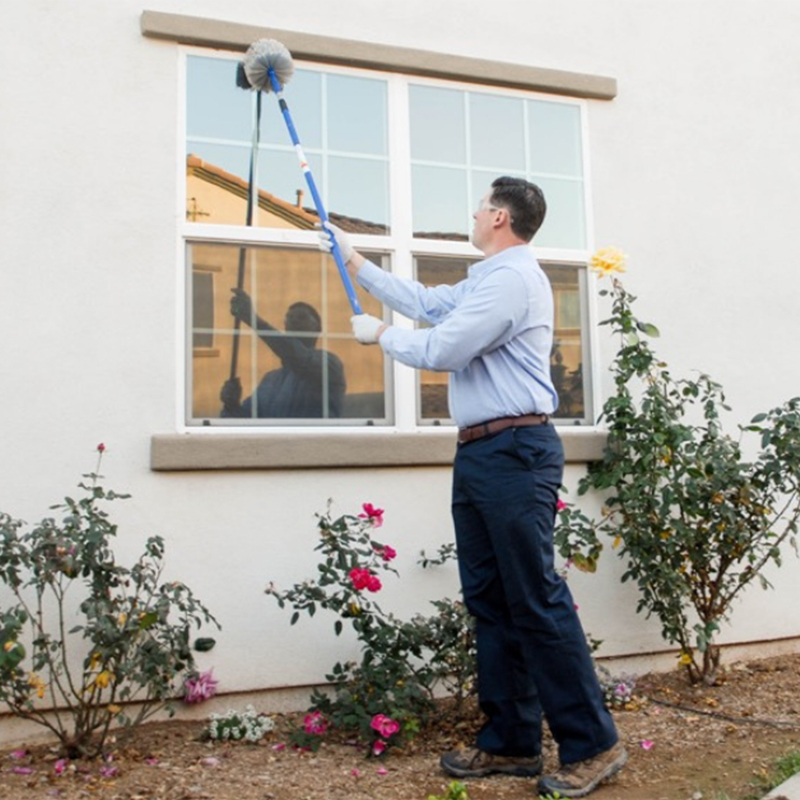Spotting winged insects around your windows or light fixtures often sparks concern, especially during Arizona’s warmer months. For many homeowners, the fear is termites, and rightly so. Termite swarmers are reproductive members of a colony that leave to start new nests, often signaling that a nearby infestation is already in progress. However, flying ants are also common and easily mistaken for termites due to their similar size and behavior. Knowing how to distinguish between these two winged invaders is crucial. Misidentifying them could either lead to unnecessary worry or, worse, overlooked structural damage. This guide breaks down their key differences and explains when it’s time to take action.
Visual Differences Between Termites and Flying Ants
Though they appear similar at first glance, termites and flying ants have distinct physical features. Looking closely at their bodies can help you make the correct identification before seeking further help.
Key differences include:
- Waist shape: Termites have a uniform, straight waist, while flying ants have a noticeable pinched waist.
- Antennae: Termite antennae are straight and bead-like; flying ants have bent or elbowed antennae.
- Wing size: Termites have two pairs of wings that are equal in length and extend well beyond the body. Flying ants’ front wings are noticeably larger than the back pair.
These distinctions are best observed when the insect is still or captured safely in a container. If you’re seeing several of these around doors or windowsills, chances are one species has already set up nearby.
Behavior and Habitat Clues
Insects behave differently depending on species, and their flight patterns or habitat preferences can also offer clues. Both termites and flying ants swarm during certain times of the year, but there are key behavioral differences.
- Swarming time: Termite swarmers are most active in spring and early summer after a rain, while ant swarms may occur later in summer.
- Nest location: Termites prefer moist, decaying wood and are often found behind walls or near foundations. Flying ants usually nest in soil or under sidewalks, occasionally migrating indoors.
- Shedding wings: After swarming, termites shed their wings en masse. Finding piles of translucent wings near windows is a strong termite signal.
For a more complete picture of aerial pest activity in Arizona, review this guide to the top flying insects commonly found in the region.
Damage Comparison: What’s at Stake?
When it comes to property damage, termites are the more destructive of the two. Termite colonies work silently and around the clock, often causing extensive structural issues before visible signs emerge. Flying ants, while annoying, rarely pose the same financial threat.
- Termites: Feed on cellulose (wood, paper, insulation). Damage is often hidden in walls, floors, or ceilings. Infestations may persist undetected for years.
- Flying ants: May nest indoors but rarely damage structural wood. Some species may chew through packaging or insulation when nesting.
Both pests can be indicators of underlying moisture problems or entry points that require sealing. Early identification and a proactive inspection can prevent serious repairs later.
Signs It’s Time to Call a Pro
Many homeowners try to self-diagnose and treat infestations, often with mixed results. However, a few signs suggest that professional help is the safer route, especially when the stakes include your home’s foundation.
Call for help if you notice:
- Swarms of flying insects indoors or around foundation vents
- Discarded wings near windows, doors, or floorboards
- Hollow-sounding wood when tapped or blistering paint on walls
- Mud tubes along the base of walls or crawl spaces
- Sightings of pests year after year in the same locations
Attempting to control termites without the proper knowledge or equipment can actually worsen the issue by pushing colonies deeper into inaccessible areas. Learn more about the hidden dangers of DIY termite methods and when to let licensed experts take over.
Preventing Future Infestations
Once you’ve confirmed which pest you’re dealing with, prevention becomes the next critical step. The goal is to make your home as uninviting as possible to swarmers and nesting colonies.
Proven prevention steps include:
- Remove wood debris, stumps, and untreated mulch from near your foundation
- Keep gutters clean and ensure proper drainage away from your home
- Seal gaps around windows, doors, vents, and utility lines
- Store firewood at least 20 feet from the house and off the ground
- Fix plumbing leaks promptly to reduce indoor moisture
Even if you haven’t spotted any swarmers yet, taking these actions now reduces your risk during peak swarm seasons.
Spot the Signs Before They Settle In
Mistaking termites for flying ants can cost more than peace of mind, it can cost you your home’s integrity. If you’re unsure what you’re seeing or have noticed insect activity that raises concern, don’t wait. Contact T2 Pest Services, Inc. today for an expert inspection and customized solution that protects your home inside and out.





